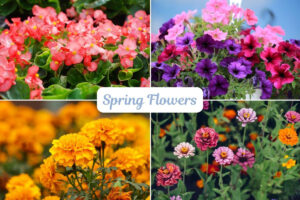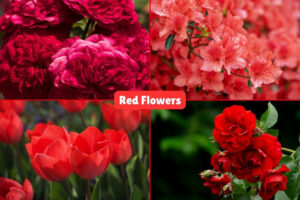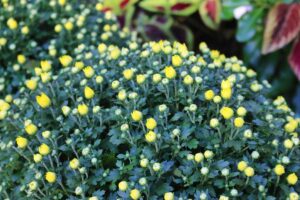This page may contain affiliate links. If you click and buy, we might get a small commission at no cost to you.
Planting bulbs in the fall is an essential task for gardeners who want a burst of color and fragrance in their gardens come springtime. Fall is the perfect time to plant these bulbs because it gives them enough time to establish roots before the ground freezes. As the cold months come to an end, these bulbs awaken from their dormancy to deliver vibrant blooms, brightening up any garden space. Here’s a list of 9 of the most popular bulbs to plant in the fall for a stunning spring display of color.
1. Tulips (Tulipa spp.)

Tulips are a classic choice for any spring garden. Available in almost every color imaginable, they come in a range of shapes, from the traditional cup-shaped blooms to more exotic, fringed or parrot varieties. Tulips are easy to plant and prefer well-drained soil in a sunny spot. Planting them 6-8 inches deep in the fall ensures a beautiful display of color in mid to late spring. Consider planting different varieties to extend the blooming period.
2. Daffodils (Narcissus spp.)
Daffodils are known for their bright yellow, white, or even pink flowers. They are deer-resistant, making them an excellent choice for gardens plagued by wildlife. Daffodils are hardy and can naturalize, meaning they come back year after year, often multiplying.
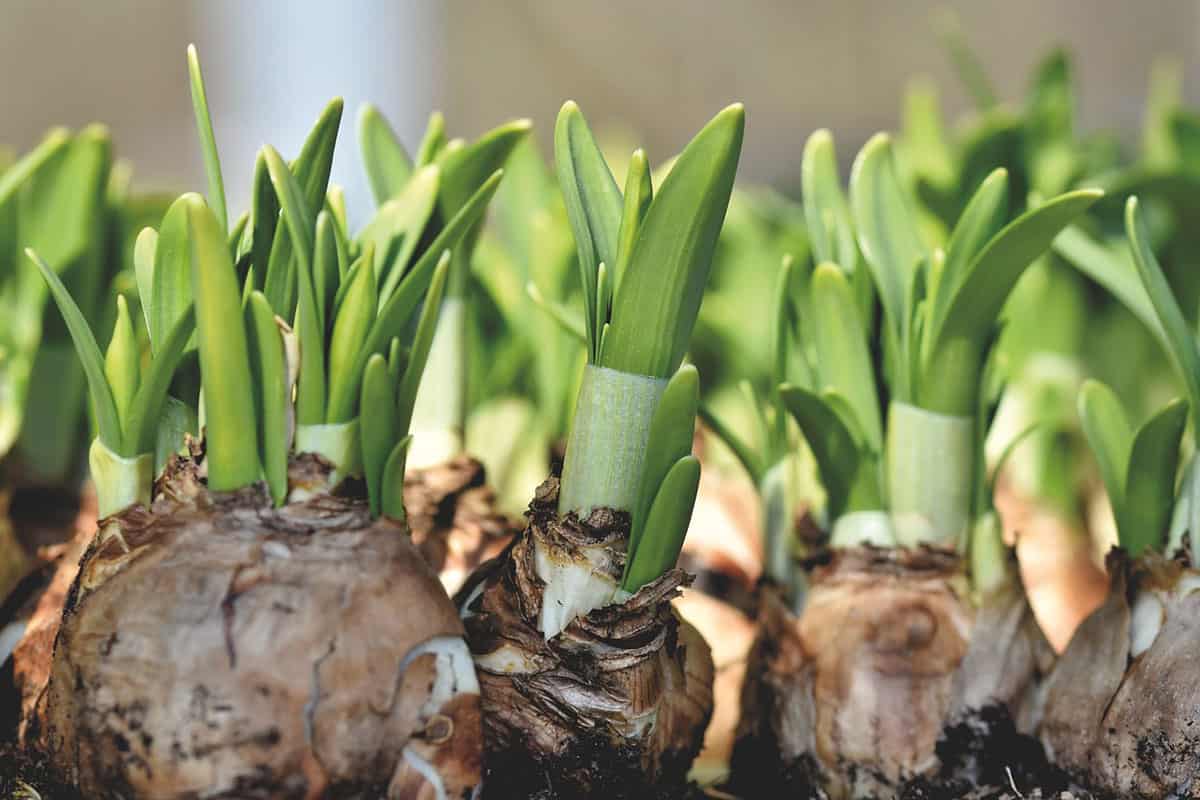
They thrive in both sun and partial shade and are best planted 4-6 inches deep in well-drained soil. Their cheerful blooms typically emerge in early to mid-spring, bringing life to the garden after a long winter.
3. Crocus (Crocus spp.)
Crocuses are among the earliest bloomers, often peeking through the snow to signal the end of winter. These small, cup-shaped flowers come in shades of purple, yellow, and white. Crocuses are perfect for naturalizing in lawns or planting in clusters along garden borders. They require well-drained soil and a sunny or partially shaded spot. Plant them about 3-4 inches deep in the fall, and enjoy their delicate beauty in late winter to early spring.
4. Hyacinths (Hyacinthus spp.)
Hyacinths are prized for their intensely fragrant, dense spikes of flowers that come in a spectrum of colors from deep blues to bright pinks and pure whites. They are a great choice for planting near walkways or entrances where their fragrance can be enjoyed up close. Hyacinths prefer full sun and well-drained soil. Plant the bulbs 4-6 inches deep, spacing them 4-6 inches apart to allow room for their robust growth in mid to late spring.
5. Alliums (Allium spp.)

Alliums are unique for their spherical clusters of small flowers that sit atop tall, slender stems, creating a striking architectural element in the garden. These bulbs are part of the onion family and are known for their purple, pink, white, or yellow blooms. Alliums are deer and rodent resistant and attract pollinators like bees and butterflies. Plant them 4-6 inches deep in well-drained soil in a sunny spot. They typically bloom in late spring to early summer, providing a stunning focal point in any garden.
6. Snowdrops (Galanthus spp.)
Snowdrops are delicate, nodding white flowers that are often the first to bloom, sometimes even through snow. These charming plants are ideal for naturalizing in woodland gardens or along shaded garden paths. Snowdrops prefer cool, moist soil and partial shade. Plant them 3-4 inches deep in the fall. Their early bloom time, often in late winter to early spring, makes them a delightful herald of the coming season.
7. Grape Hyacinths (Muscari spp.)
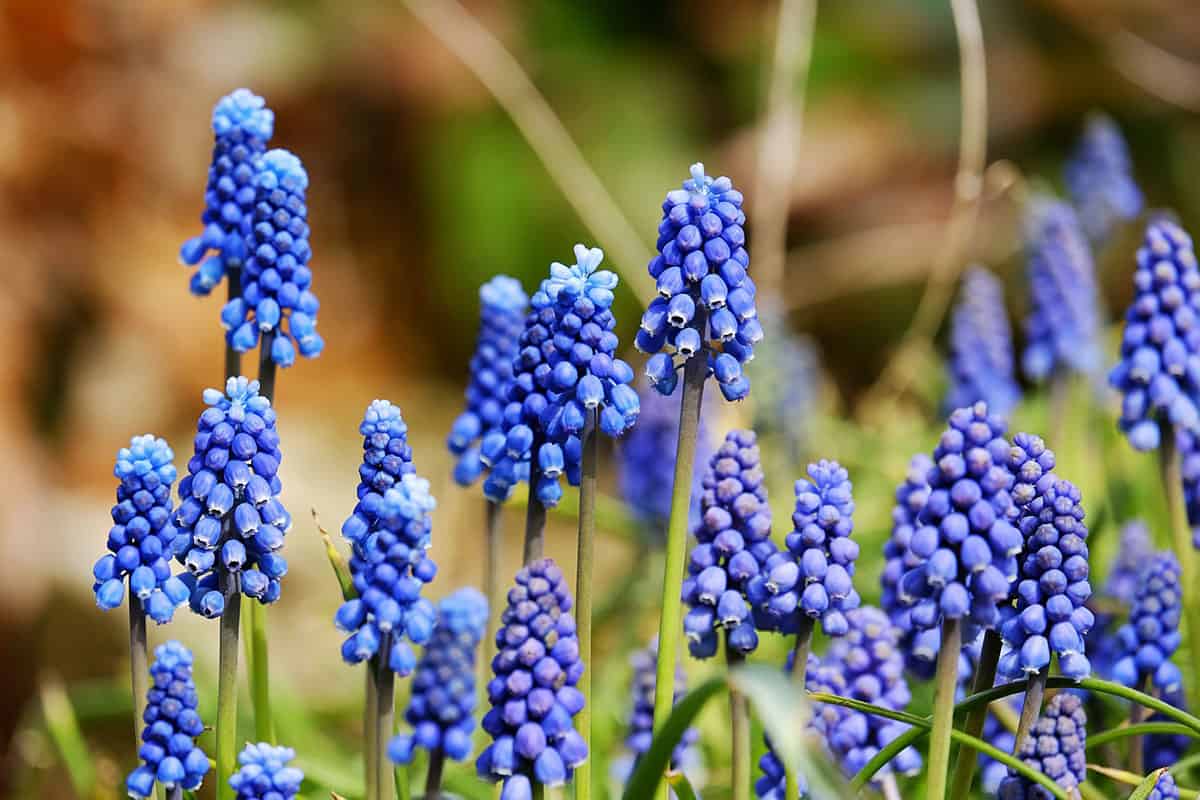
Grape hyacinths are small, hardy plants that produce clusters of tiny, bell-shaped flowers resembling bunches of grapes. They are typically blue, but white and pale pink varieties are also available. Grape hyacinths are excellent for edging, rock gardens, or underplanting with taller spring bulbs like tulips. They prefer full sun to partial shade and well-drained soil. Plant them 3-4 inches deep in the fall, and enjoy their blooms from early to mid-spring.
8. Iris Reticulata (Iris reticulata)
Iris reticulata is a dwarf iris that blooms in early spring, offering vibrant purple, blue, yellow, or white flowers with intricate markings. These irises are perfect for rock gardens, containers, or the front of borders. They prefer full sun and well-drained soil. Plant the bulbs 3-4 inches deep in the fall, spacing them 3 inches apart. Their low-growing foliage and striking blooms add a pop of color to the early spring garden.
9. Fritillaria (Fritillaria spp.)
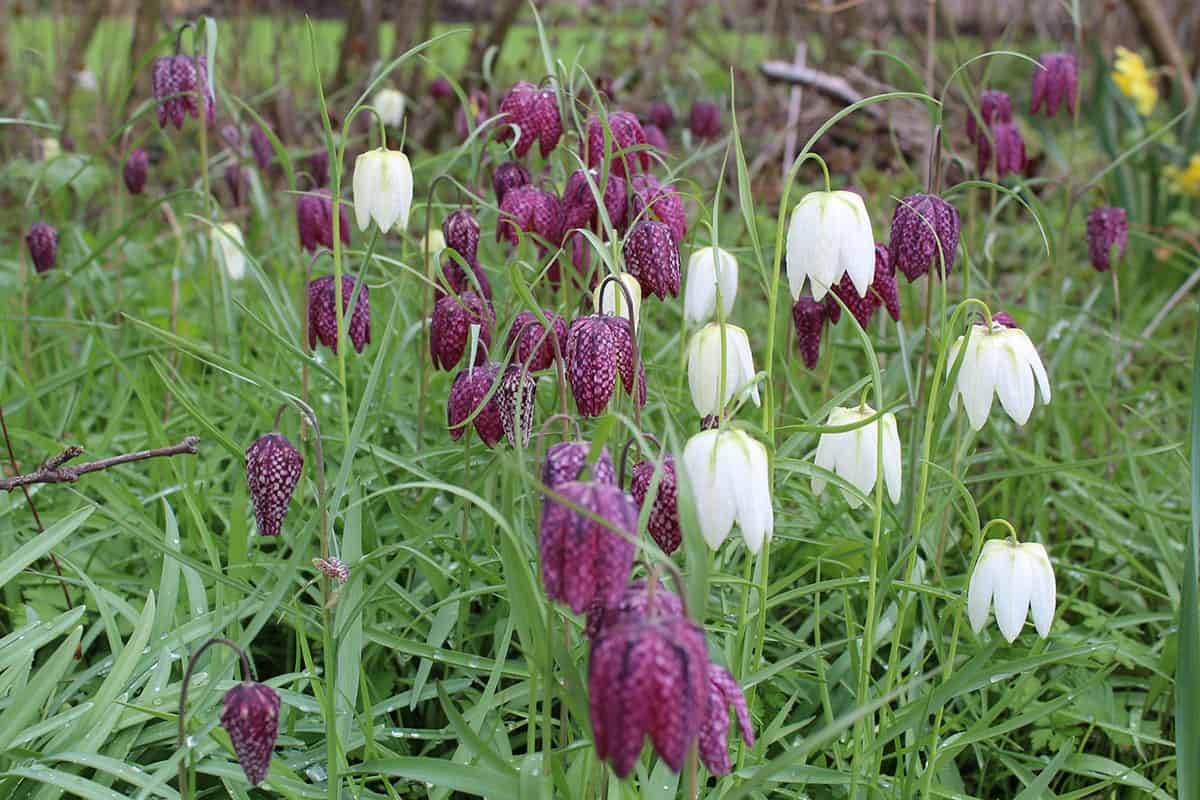
Fritillarias are known for their unique, bell-shaped flowers that hang delicately from tall stems. Available in colors like yellow, orange, purple, and even checkered patterns, these flowers add an exotic flair to any garden. Fritillarias prefer well-drained soil and a sunny to partially shaded location. Plant them 4-6 inches deep in the fall. They bloom in mid to late spring, and their unusual appearance makes them a conversation starter in any garden setting.
Tips for Planting Bulbs in the Fall
Planting bulbs in the fall requires some thoughtful preparation to ensure a vibrant display in the spring. First, choose a location that receives adequate sunlight; most spring-blooming bulbs prefer full sun to partial shade. The soil should be well-drained, as bulbs can rot in overly wet or clay-heavy soil. To improve drainage, consider mixing sand or organic matter into the planting area.
Once you’ve chosen the location, it’s time to prepare the soil. Loosen it to a depth of about 12 inches to allow for proper root development. When planting, a general rule of thumb is to place the bulb at a depth of about two to three times its height. For example, if a bulb is 2 inches tall, it should be planted about 4 to 6 inches deep. Be sure to plant the bulb with the pointed end facing upwards and the flatter, root side down.
After planting, water the bulbs thoroughly to help them settle in and establish roots. Applying a layer of mulch over the planted area can help retain moisture, regulate soil temperature, and protect the bulbs from extreme winter temperatures. Throughout the winter, monitor the moisture levels; while bulbs should not be waterlogged, they do need some moisture to prevent them from drying out.
Consider planting bulbs in clusters or drifts rather than single rows to create a more natural, fuller look when they bloom. Mixing early, mid, and late-season bloomers can provide continuous color from early spring through to summer. Remember that many bulbs, such as tulips and daffodils, can be naturalized, meaning they will come back year after year. Choose a variety that suits your garden’s needs and e

